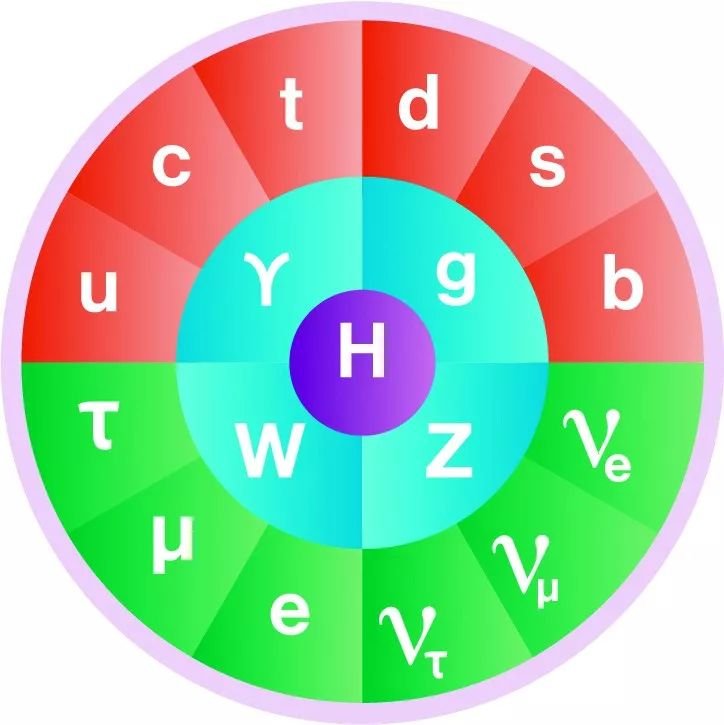The Standard Model was presented in 1970. It’s the result of many researches and discoveries in particle physics area since 1930.
Division of fundamental particles
The Standard Model has 17 elementary particles, i.e., can’t be divided into smaller particles.


Fermions on Standard Model
These elementary particles form the matter, follow the Pauli exclusion principle, and spin value is a half integer multiple (1/2, 3/2, etc.) of ℏ. What is spin? It is the particle’s intrinsic angular momentum and doesn’t depend on its motion, spin has a quantized value, i.e., can only adopt discrete values, which are a positive or negative multiple of ℏ. Where ℏ is the reduced Planck constant, whose value and equation are below. All observed fermions until now have a spin of 1/2ℏ or -1/2ℏ.


The Pauli exclusion principle claims that two or more particles can’t have the same quantum state, i.e., can’t have all quantum numbers exactly equal when they are in the same confinement region.

Pauli exclusion principle makes the atoms stable.
Quarks
Quarks are always in groups of two (meson) or three (baryon) because the strong nuclear force attracts them.

In addition to quarks being divided into six “flavors” (up, down, top, bottom, charm, and strange), they also have a property called “cor”, which can be red, green, or blue. They aren’t actually colors, just arbitrary labels to explain why two or three identical quarks can occupy the same quantum state, which is an apparent violation of the Pauli exclusion principle. This concept gave origin to the field of quantum chromodynamics (QCD).
Leptons
Leptons aren’t affected by strong nuclear force. But they interact with electromagnetic and weak nuclear forces. The muon is 207 times heavier than the electron (e^{-}) and was discovered during an observation of cosmic rays, in 1936. It’s an unstable particle, that lasts only 2.2 microseconds before decay to lighter particles. Below are the decay reactions of muon (\mu^{-}) and antimuon (\mu^{+}) respectively.
\mu^{-}\rightarrow e^{-}+\nu _{\mu}+\bar{\nu}_{e}
\mu^{+}\rightarrow e^{+}+\bar{\nu _{\mu}}+\nu_{e}
Where,
- The e^{+} is the positron, electron’s antiparticle.
- \nu_{e} and \bar{\nu}_{e} are electron’s neutrino and antineutrino, respectively.
- \nu _{\mu} and \bar{\nu _{\mu}} are muon’s neutrino and antineutrino, respectively.
Tau is heavier than muon, it’s also found in cosmic rays and lasts 2.9\cdot 10^{-13} seconds.

When particles travel at a speed close to the light, they can last longer.
Every fermion has its antimatter counterpart or antiparticle and antiquarks have anticolors. However, antimatter interacts with gravity in the same way as common matter. The neutrinos will be topic of another post.
Bosons on Standard Model
These particles carry energy and exert the universe’s fundamental forces. They have a spin integer value and many of these particles can occupy the same quantum state.
Gluons and photons
Gluons transmit the strong nuclear force, which keeps the quarks united to form protons, neutrons, and other hadrons. Thanks to the strong nuclear force, protons with positive charge can be united to form the atomic nucleus with neutrons. Photons are light particles, which exert electromagnetic force, transmitting energy to electrically charged particles such as electrons.
Z and W bosons
These particles mediate the weak nuclear force and are too heavy, limiting the influence of weak nuclear force, that’s why has this name. This force is responsible for beta decay, which is when a neutron becomes a proton and when an unstable isotope of an element decays to one more stable.

It’s also responsible for changing particles’ identity when they emit or absorb one of these bosons. Below are diagrams that show some examples of interactions between bosons and fermions.



The Standard Model is incomplete because it predicts the existence of graviton, the still not observed particle responsible for gravity, which is another nature’s fundamental force. CERN discovered the Boson of Higgs in 2012, this particle will be subject for a future post.



